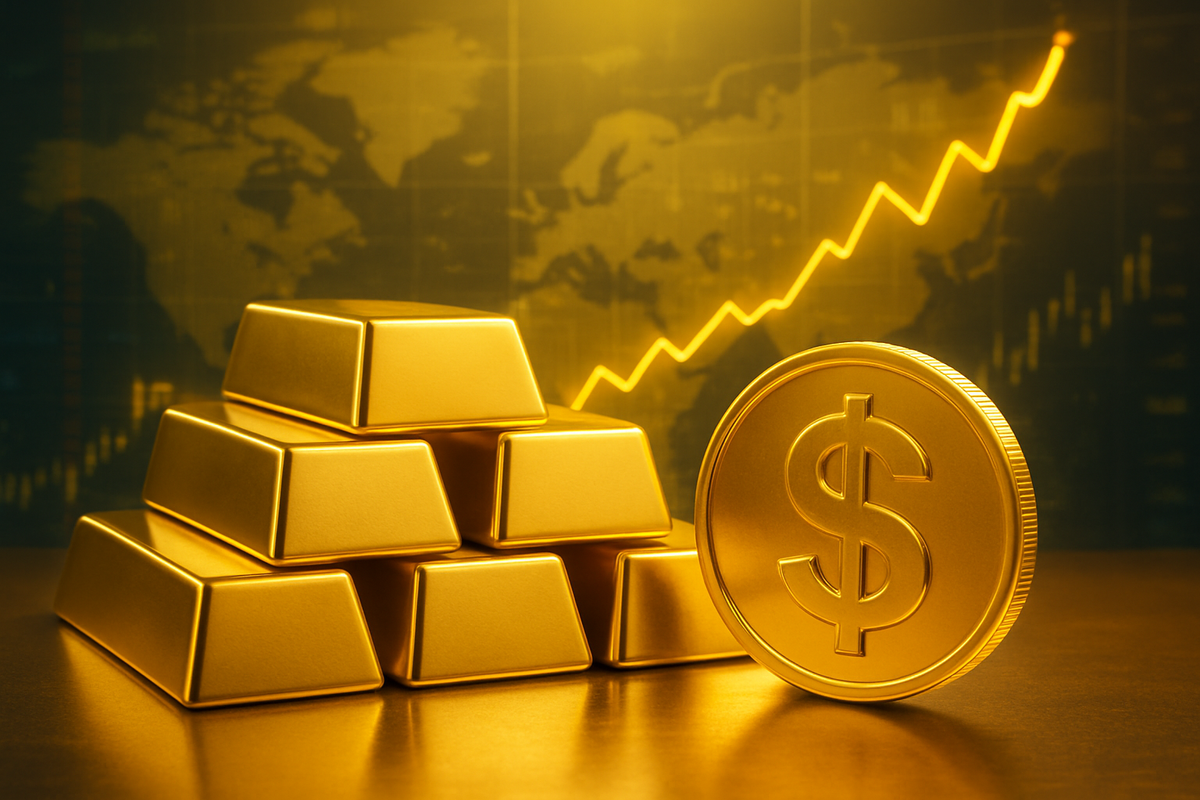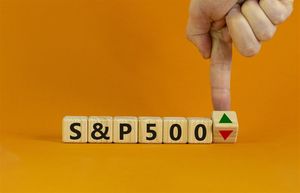
New York, NY (November 26, 2025) – Deutsche Bank (NYSE: DB) has sent a ripple of anticipation through global financial markets today by significantly elevating its 2026 gold price forecast to an average of $4,450 per ounce, up from its previous projection of $4,000/oz. This upward revision, which suggests gold could trade within a range of $3,950 to $4,950/oz next year, immediately reinforces bullish sentiment and underscores a belief in gold's sustained ascent in the coming years.
The immediate implications of this revised outlook are multifaceted, primarily signaling enhanced investor confidence in the yellow metal. Analysts at Deutsche Bank, including Michael Hsueh, point to "resilient investor demand, strong central-bank buying, and limited supply response" as key drivers behind the upgrade. This suggests that investment flows into gold and related assets, such as Exchange Traded Funds (ETFs), are likely to see a continued boost, with central banks expected to maintain their substantial purchases, often viewing gold as "the ultimate protection against black swan tail risk events."
Detailed Coverage: Unpacking Deutsche Bank's Bullish Gold Outlook
Deutsche Bank's new average forecast for 2026 stands at $4,450/oz, a considerable hike from its previous projection of $4,000/oz, which was established just two months prior in September 2025. Earlier in September, the bank had already raised its 2026 forecast from $3,700/oz to $4,000/oz. The bank now anticipates gold to trade within a broad range of $3,950 to $4,950 per ounce in 2026, with a possible high near $4,950/oz. This upper bound would be approximately 14% above the current December 2026 futures prices.
The initial upward revision to $4,000/oz in September 2025 was primarily driven by several key factors: anticipated interest rate cuts by the Federal Reserve, a noticeable increase in gold purchases by central banks, a weakening U.S. dollar, and growing uncertainty surrounding the Federal Reserve's independence. At that time, gold had already experienced a significant rally, surging approximately 41% year-to-date and surpassing the $3,700 mark for the first time. Geopolitical uncertainty also contributed to increased safe-haven demand for gold.
The most recent and more aggressive forecast hike to $4,450/oz on November 26, 2025, is attributed to a combination of stabilizing investor flows, persistent and robust central bank demand, and a limited supply response in the gold market. Deutsche Bank analysts highlighted that third-quarter supply-demand data supported a continued central bank bid, with inelastic demand from central banks and ETF investments diverting supply from the jewelry market. Overall, growth in demand is outpacing supply. Furthermore, gold's strong performance relative to the U.S. dollar and its unusually wide trading range in 2025—the largest since 1980—are seen as underpinning this constructive outlook for 2026.
As of November 26, 2025, gold was trading around $4,171/oz, hovering near two-week highs. This surge was influenced by market participants increasingly betting on a more dovish Federal Reserve and expectations of a December interest rate cut. Weaker-than-expected U.S. economic data, including subdued consumer spending and moderating producer prices, reinforced these rate-cut expectations. Lower interest rates typically benefit non-yielding assets like gold. The primary analyst behind Deutsche Bank's precious metals forecasts is Michael Hsueh. Central Banks, particularly the Federal Reserve and global central banks, are crucial stakeholders, with their monetary policies and gold accumulation strategies significantly impacting the market. The immediate reaction from the market and industry appears to be the widespread dissemination and analysis of Deutsche Bank's updated forecast, contributing to a broader bullish narrative for gold.
Corporate Fortunes: Winners and Losers in a $4,450/oz Gold Market
Deutsche Bank's optimistic forecast of gold prices averaging $4,450/oz in 2026 is poised to significantly impact various public companies, creating clear winners and some facing increased cost pressures.
Potential Winners:
- Gold Mining Companies: These companies stand to be the most direct beneficiaries. Higher gold prices directly translate to increased revenues and expanded profit margins, assuming stable production costs. This can lead to greater free cash flow, enabling miners to increase exploration budgets, develop new projects, pay down debt, or return capital to shareholders. Major producers like Newmont Corporation (NYSE: NEM), the world's largest, and Barrick Gold Corporation (NYSE: GOLD), the second largest, are exceptionally well-positioned. Other notable mentions include Agnico Eagle Mines Limited (NYSE: AEM), Kinross Gold (NYSE: KGC), Gold Fields (NYSE: GFI), and Polyus (LSE: PLZL). Junior and mid-tier miners such as Pan American Silver (NASDAQ: PAAS), Equinox Gold (NYSEAMERICAN: EQX), and Alamos Gold (NYSE: AGI) could also become highly profitable or attractive acquisition targets.
- Gold Exchange-Traded Funds (ETFs): Designed to track the price of physical gold, these ETFs are direct beneficiaries. As gold's value increases, so does their Net Asset Value (NAV). Increased investor interest driven by the bullish forecast would also likely lead to higher inflows. Examples include SPDR Gold Shares (NYSE Arca: GLD), iShares Gold Trust (NYSE Arca: IAU), and SPDR Gold MiniShares Trust (NYSE Arca: GLDM). Gold Miner ETFs like VanEck Gold Miners ETF (NYSE Arca: GDX) and iShares MSCI Global Gold Miners ETF (NASDAQ: RING) would see a dual benefit from appreciating mining stocks and increased investor interest.
- Indirect Beneficiaries: High-end luxury jewelry brands might experience increased perceived value for gold products. Companies like Rajesh Exports (NSE: RAJESHEXPO), a global leader in gold business, could benefit from the increased intrinsic value of their products. Gold refiners would also see higher volumes and potentially better margins.
Potential Losers (or Less Favorable Impact):
- Industries Heavily Reliant on Gold as an Input: Companies that use gold as a raw material for manufacturing could face significantly higher input costs, squeezing profit margins or requiring them to pass on increased costs. This includes electronics manufacturers (e.g., semiconductor companies, consumer electronics brands), specialized medical device manufacturers, and aerospace and defense companies.
- Gold Mining Companies with Extensive Hedging: Miners that have extensively hedged their future output at prices significantly below $4,450/oz would realize less of the upside from the spot price increase compared to unhedged producers.
- Companies with Very High All-in Sustaining Costs (AISC): While all miners generally benefit, those with exceptionally high AISC might see their relative competitive advantage diminish, with slimmer profit margins compared to low-cost producers.
Broader Implications: Gold's Reshaped Role in the Global Economy
The elevated forecast from Deutsche Bank underscores a conviction that gold's upward trajectory is structurally supported rather than merely cyclical. Analyst Michael Hsueh points to an "inelastic demand from central banks and ETF investment diverting supply from the jewellery market," highlighting that overall growth in demand is outpacing supply. Gold's strong performance relative to the U.S. dollar and its unusually wide trading range in 2025—the largest since 1980—further bolster this optimistic outlook for 2026.
A key driver is the expected rebound in official sector buying from central banks, with surveys indicating a record high number of central banks planning to increase their gold allocations. This trend positions gold as the "ultimate protection against black swan tail risk events." Additionally, Exchange-Traded Funds (ETFs) have returned to net accumulation in 2025 after four years of outflows, signifying renewed investor interest. The forecast for modest increases in mined gold output in 2026 further contributes to the supply-demand imbalance supporting higher prices. Expectations of a dovish Federal Reserve outlook and anticipated interest rate cuts also play a crucial role, as lower interest rates generally increase the attractiveness of non-yielding assets like gold.
Deutsche Bank's updated forecast aligns with a broader bullish consensus among major financial institutions. Goldman Sachs (NYSE: GS), for instance, has boosted its year-end 2026 projection to $4,900/oz, and Bank of America (NYSE: BAC) forecasts gold to average $4,538/oz in 2026 with a potential climb to $5,000/oz. Morgan Stanley (NYSE: MS) also revised its 2026 gold forecast upward to $4,400 per ounce. This collective institutional optimism suggests a prevailing belief in gold's enduring value proposition. The consistent drivers cited across the industry include persistent central bank purchases, strong ETF inflows, ongoing economic and geopolitical uncertainty, and a weakening U.S. dollar. Gold is increasingly being viewed as a strategic hedge against a variety of risks, including inflation, currency debasement, stagflation, recession, and U.S. policy uncertainties. This multifaceted role solidifies its position as a crucial component in diversified investment portfolios.
A rapidly appreciating gold market, particularly one driven by strong investment demand, could attract increased regulatory scrutiny. Governments might implement measures to monitor speculation and curb illegal activities, such as cross-border gold smuggling. The sustained rise in gold prices might also be interpreted as a signal of diminishing confidence in conventional economic tools and fiat currencies, potentially influencing central bank policies related to inflation targeting and quantitative easing. Historically, gold tends to experience multi-year rallies, typically lasting at least two years, followed by periods of consolidation. The current rally, with gold prices up over 55% in 2025, fits this pattern, suggesting it may have further room to run. The current widespread institutional bullishness, with multiple major banks forecasting significantly higher gold prices, echoes periods when a consensus view forms around a commodity, potentially breaking away from past "anchoring bias" that underestimated gold's upward trend.
The Road Ahead: Navigating Gold's Elevated Trajectory
In the short term (2025-2026), the gold market is expected to experience continued bullish momentum. Central banks are anticipated to remain significant buyers, driven by diversification and a desire for protection against "black swan tail risk events." Investor interest, as evidenced by returning ETF inflows, coupled with a more dovish Federal Reserve outlook and persistent geopolitical uncertainties, will fuel this trend. Supply constraints, with mine output expected to rise only modestly and recycling below historical peaks, further support higher prices. However, a deeper equity market correction or less aggressive Fed easing could present short-term headwinds.
The long-term outlook for gold appears robust beyond 2026. Continued central bank diversification away from U.S. dollar reserves, persistent inflation concerns, and ongoing economic and geopolitical uncertainties are expected to sustain high prices. Some long-term predictions extend beyond Deutsche Bank's forecast, with analysts seeing gold reaching $5,000-$6,000 by 2030. For investors, strategic pivots include reassessing portfolio allocation, diversifying across physical gold, ETFs, and gold mining stocks, and focusing on low-cost producers. A long-term perspective and active risk management are crucial.
Gold mining companies will likely experience increased profitability, leading to greater exploration budgets and project development. However, they may also face rising operational costs and should focus on efficiency, technology adoption, and carefully adapting hedging strategies. The jewelry industry may see a shift towards higher-value, investment-worthy pieces, with 14K gold becoming more prevalent for core collections and a thriving secondary market for vintage items. Jewelers will need to justify premium prices by emphasizing craftsmanship and ethical sourcing. Market opportunities include increased investment flows, growth in the mining sector, and the continued role of gold as a safe-haven asset. Challenges include potential demand destruction in price-sensitive jewelry segments, rising production costs for miners, and the inherent volatility of the gold market.
Conclusion: Gold's Enduring Appeal in a Volatile World
Deutsche Bank's significantly revised gold forecast is highly significant, reflecting a deep-seated change in global financial asset allocation. The emphasis on central bank buying as a primary, non-price-sensitive demand driver suggests a long-term structural recalibration where gold is increasingly seen as a foundational reserve asset amidst economic and geopolitical uncertainties. This move by a major global bank, echoing similar aggressive projections from institutions like Goldman Sachs (NYSE: GS) and Bank of America (NYSE: BAC), validates the metal's enhanced role in diversifying portfolios and hedging against systemic risks. The lasting impact could be a persistently elevated price floor for gold, potentially decoupling it further from traditional inverse relationships with the U.S. dollar and interest rates.
The outlook for the gold market is predominantly bullish, driven by these fundamental shifts. The "inelastic demand" from central banks is creating a higher floor for gold prices, suggesting that sovereign entities are prioritizing gold accumulation as a long-term strategic asset. This structural support is expected to sustain gold's rally. Beyond gold, the positive momentum is anticipated to spill over into other precious metals like silver, platinum, and palladium due to consecutive years of undersupply.
Investors should closely monitor central bank gold purchases, Federal Reserve policy signals, geopolitical stability, equity market performance, and supply-demand dynamics in the coming months. While gold may experience short-term fluctuations, the overall outlook remains decidedly bullish, necessitating strategic adaptations from all market participants.
This content is intended for informational purposes only and is not financial advice






